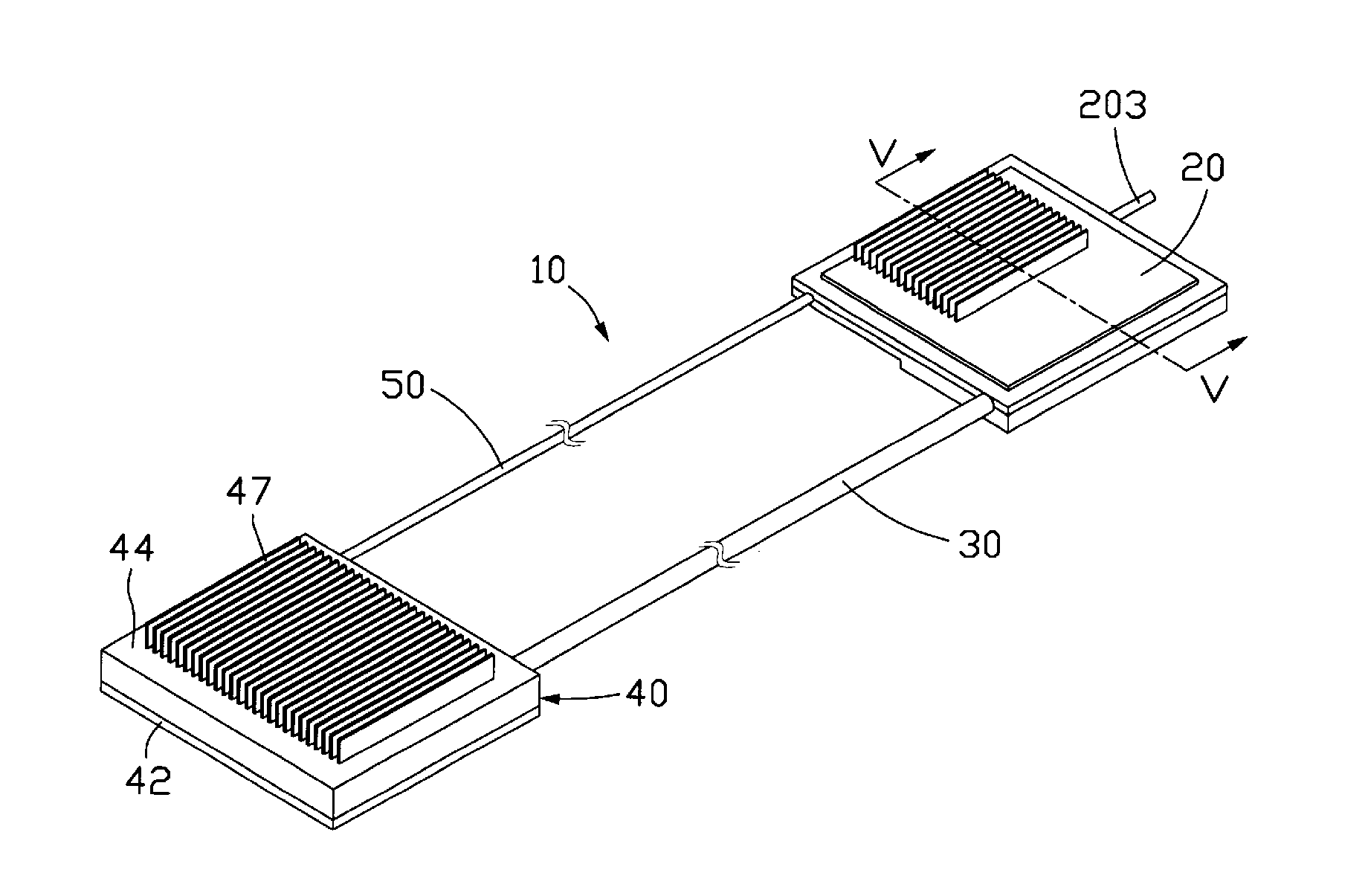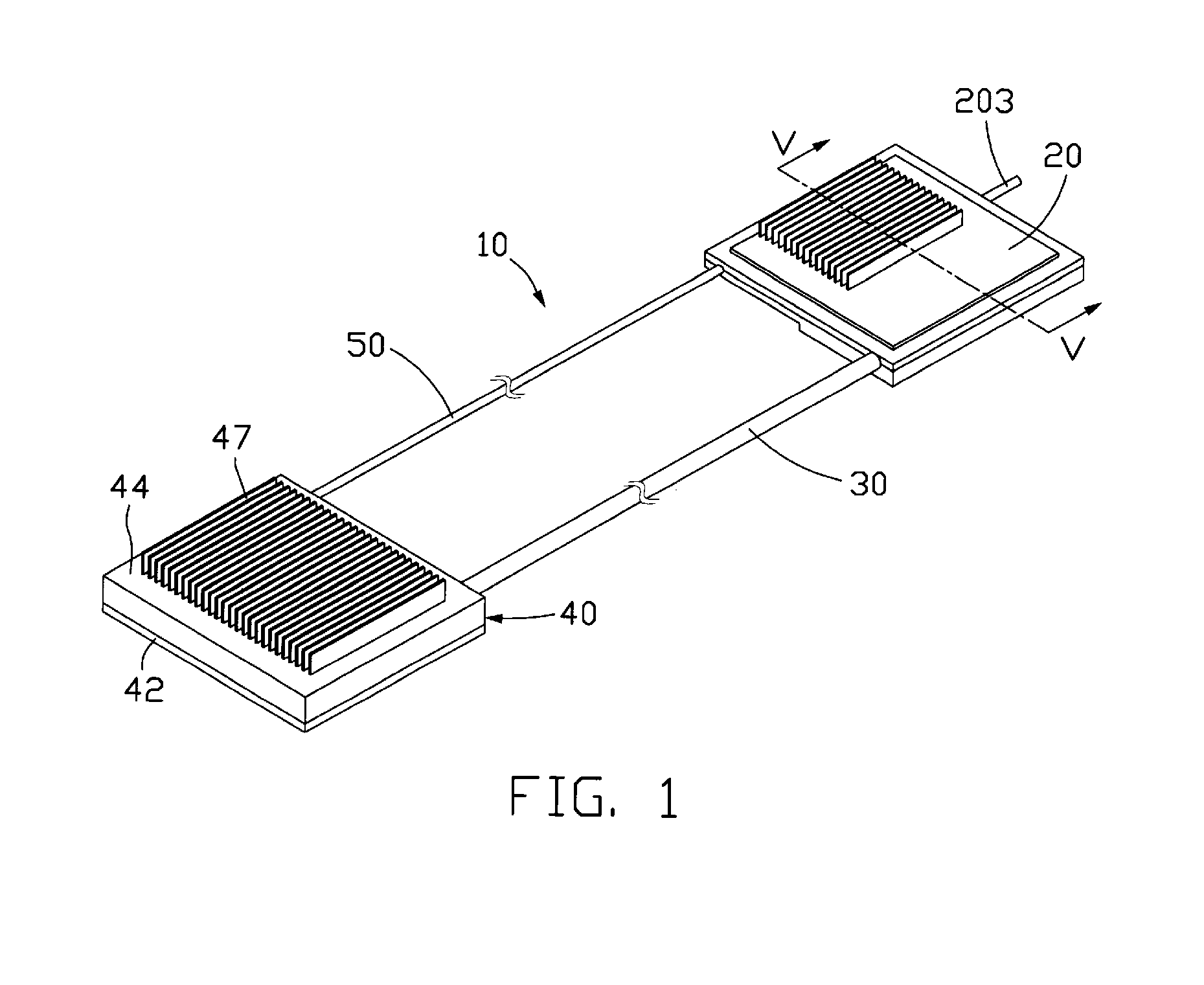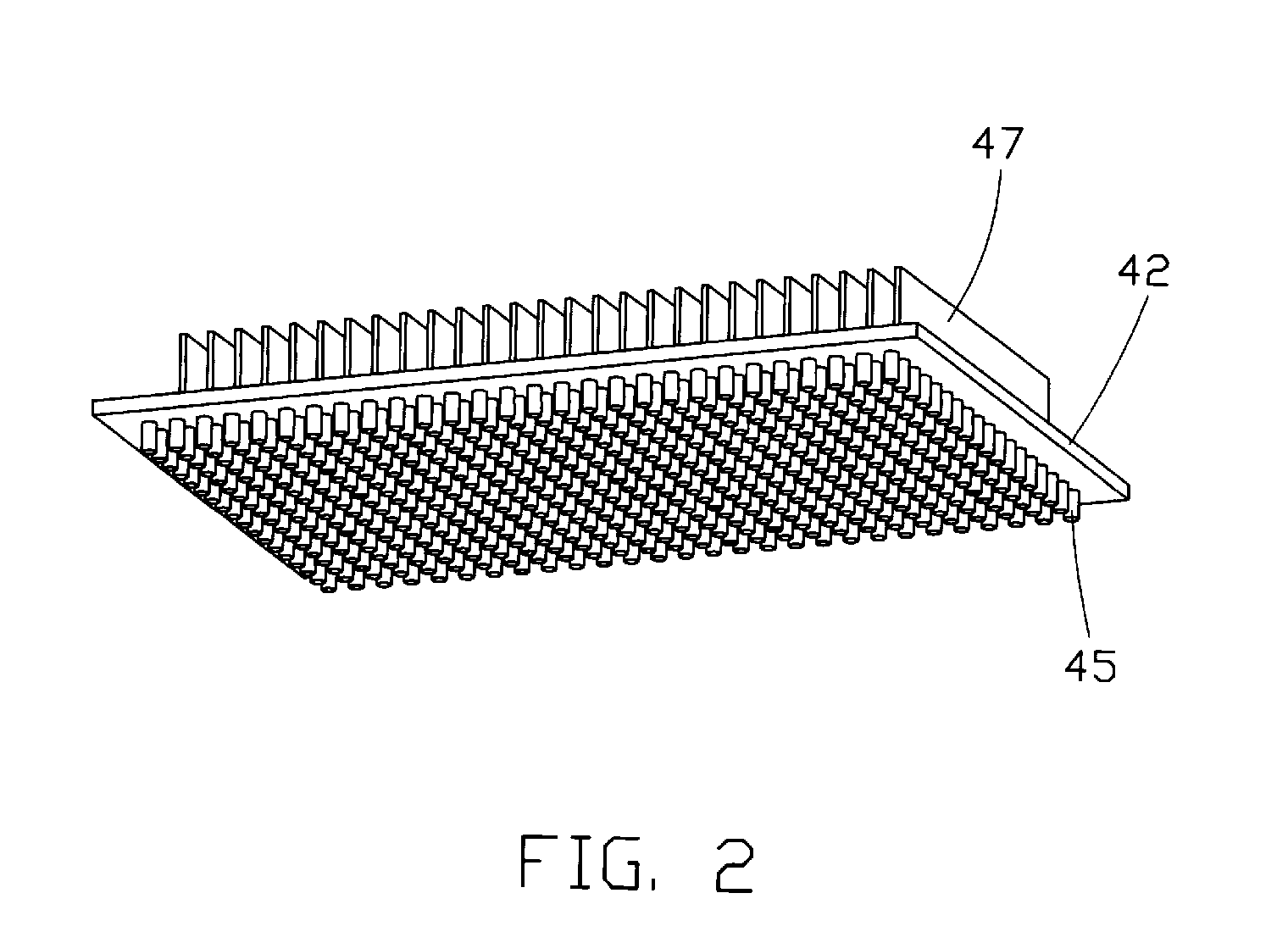Loop-type heat exchange device
a heat exchange device and loop-type technology, applied in the direction of indirect heat exchangers, light and heating apparatuses, laminated elements, etc., can solve the problems of affecting workability and stability, affecting the workability of the heat exchange device, and the inability of known cooling devices such as heat sinks and cooling fans to remove heat from electronic components, etc., to achieve high heat-absorbing surface area, prevent an excessive amount of condensate, and enhance the heat exchange capability of the condenser
- Summary
- Abstract
- Description
- Claims
- Application Information
AI Technical Summary
Benefits of technology
Problems solved by technology
Method used
Image
Examples
first embodiment
[0023]FIG. 1 illustrates a loop-type heat exchange device 10 in accordance with the present invention. The heat exchange device 10 includes an evaporator 20, a vapor conduit 30, a condenser 40 and a liquid conduit 50. The evaporator 20 preferably is made of two separable portions connected together, as will be discussed in more detail later. The vapor and liquid conduits 30, 50 lie in parallel to each other, although they are not limited to this relationship. Two ends of each of the vapor and liquid conduits 30, 50 are respectively connected to the evaporator 20 and the condenser 40. The vapor and liquid conduits 30, 50 preferably are made of flexible metal or non-metal materials so that they could be bent or flattened easily in order to cause the heat exchange device 10 to be applicable in electronic products having a limited mounting space such as notebook computers.
[0024]The heat exchange device 10 contains therein a working fluid (not shown). As heat from a heat source (not show...
second embodiment
[0034]FIG. 8 shows a loop-type heat exchange device (not labeled) in accordance with the present invention. In this embodiment, the condenser 40 is disposed aslant with respect to the liquid conduit 50 and the vapor conduit 30, with an acute angle (a) formed therebetween. Thus, the condensate is capable of entering from the condenser 40 into the liquid conduit 50 more easily due to an additional driving force, i.e., the gravity of the condensate. In this embodiment, the condenser 40 is located at a position higher than that of the evaporator 20.
third embodiment
[0035]FIG. 9 shows a loop-type heat exchange device (not labeled) in accordance with the present invention. In this embodiment, the condenser 40 is disposed perpendicularly to the liquid conduit 50 and the vapor conduit 30. This heat exchange device is suitable for use in a desktop computer or the like and the heat removal capacity of the condenser 40 can be further improved by employing the forced airflow coming from the system cooling fan installed on the desktop computer. In this embodiment, the condenser 40 is located at a position higher than that of the evaporator 20.
PUM
 Login to View More
Login to View More Abstract
Description
Claims
Application Information
 Login to View More
Login to View More - R&D
- Intellectual Property
- Life Sciences
- Materials
- Tech Scout
- Unparalleled Data Quality
- Higher Quality Content
- 60% Fewer Hallucinations
Browse by: Latest US Patents, China's latest patents, Technical Efficacy Thesaurus, Application Domain, Technology Topic, Popular Technical Reports.
© 2025 PatSnap. All rights reserved.Legal|Privacy policy|Modern Slavery Act Transparency Statement|Sitemap|About US| Contact US: help@patsnap.com



